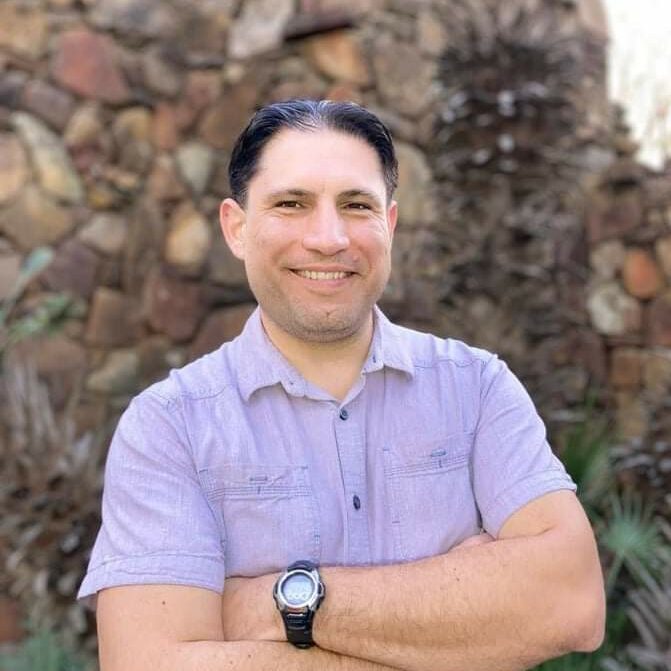Many people feel self-conscious about what others think of them, especially in public spaces. But imagine feeling so worried about your perception that you can’t walk across campus. That was the experience of a college-aged client of Melissa Galica, a licensed professional counselor with Grow Therapy.
Eventually, they would need to work out where the anxiety was coming from. But in the meantime, they needed her to be able to cross campus. That’s where cognitive behavioral therapy (CBT) came in. CBT is designed to help people tackle present, pressing problems, so that they can live healthier, more peaceful lives.
Galica gave her a homework assignment, which is typical of CBT: get a fidget spinner. Next time you cross campus, play with the spinner to keep your hands and mind occupied. This helps to keep the thinking part of our brains from being taken over by our emotional part of the brain.
“The next day, I get a text message that says, ‘That was so weird. It worked.’” Galica remembers. Changing the behavior actually helped change the client’s cognition. CBT isn’t magic — but it can make a meaningful difference in our day-to-day lives.
What is Cognitive Behavioral Therapy?
Cognitive behavioral therapy (CBT) is a type of talk therapy that’s about changing your thoughts, so that you can change unhealthy or unwanted behaviors.
“Literally, it’s cognitive. We’re thinking about how you think,” says Galica.
That’s the ultimate goal of CBT: building strategies to live healthier and more aligned with your personal values. People often start CBT when they’re stuck in thought and behavior patterns that they don’t want but can’t stop. For example, CBT can help address, resolve, or alleviate:
- Not sleeping well
- Behaviors of eating disorders
- Avoiding conflict
- Feeling intense anxiety
- Returning continually to a toxic or abusive partner
One of the very first cognitive things I may talk about with a client is ‘how are you sleeping?’ And if not, we need to focus on that first.
- Melissa Galica, LPC
If you’re considering CBT, you should know that it’s both problem-oriented and present-focused, according to an article from the Institute for Quality and Efficiency in Health Care. Here’s what this means:
- Problem-Oriented: In CBT, you’re working on a specific problem or set of concerns, and you’re building skills to help address them.
Example: Imagine you’re doing CBT for an eating disorder. You and a therapist will identify unwanted behaviors and thoughts, and then begin understanding the beliefs underlying them. Together, you’ll begin replacing those beliefs with more recovery-focused ones. CBT therapists believe that when you can change the constructs, you can change the behaviors.
- Present-Focused: CBT helps you manage the thoughts, behaviors, and feelings that you’re experiencing today — not what’s led up to your difficulties. You may explore parts of your past, but that won’t be your therapist’s focus.
Example: If you’re working on shutting down during difficult conversations with your partner, you and your therapist might consider why this happens. But CBT’s primary emphasis is to help you recognize and manage the behavior — shutting down — so that you can better navigate those conversations.
Other Behavior-Based Therapies
CBT isn’t the only behavior-based therapy that can help people struggling with depression, anxiety, post-traumatic stress disorder (PTSD), and other mental health conditions. More behavior-based therapies include:
- Acceptance and Commitment Therapy (ACT): This therapy helps you practice accepting your experiences, including negative thoughts and emotions, without needing to control or eliminate them. ACT helps you become more mindful of your thoughts and personal values, hopefully to move you toward committing to making necessary changes.
- Dialectical Behavior Therapy (DBT): DBT is a talk therapy based on CBT but adapted for people who experience their emotions very intensely. You’ll learn practical skills for managing emotions, such as mindfulness, distress tolerance, and “interpersonal effectiveness” (which means advocating for yourself and setting boundaries).
- Mindfulness-Based Cognitive Therapy (MBCT): This therapy combines CBT’s principles with mindfulness techniques. In MBCT, you’ll practice recognizing the thoughts behind your behaviors while using mindfulness to manage any negative emotions and view yourself more objectively.
How Cognitive Behavioral Therapy Works
We all have cognitions (thoughts) and constructs (beliefs) that underlie them. These cognitions shape our behaviors — sometimes in good, helpful ways and sometimes in unproductive, unhealthy ways.
Unfortunately, we’re not always aware of our unhealthy cognitions, much less the unhealthy beliefs behind them. This means we sometimes engage in unhealthy behaviors even when they harm us or we don’t want to do them. Galica compares these hidden, underlying beliefs to embers; unless put out, they could start another fire.
“The elements that start the dumpster fire are still smoldering in the bin, and those things will reignite,” she says.
CBT focuses on putting out the embers — in other words, getting to the root of someone’s problems. Researchers have actually found CBT is an effective treatment for depression, anxiety disorders, substance use problems, marital struggles, eating disorders, and severe mental illness, according to the American Psychological Association.
Mental health professionals think CBT works well in these scenarios because:
- Psychological issues are partly based on faulty or unhelpful ways of thinking — and CBT helps identify and redirect these.
- Psychological issues partly based on learned patterns of unhelpful behavior — which CBT therapists help clients replace with healthier behaviors.
- People dealing with psychological concerns can learn better coping skills through CBT that relieve symptoms and help them be more effective in their lives.
Of course, all these benefits assume that you have a therapist who is safe and with whom you have good rapport. “First we have to decide if we like each other,” as Galica puts it. Then the work can start.
What to Expect in a CBT Session
Preparing for your first session doesn’t have to be intimidating. In fact, it should be something you look forward. But what’s going to happen in this first session? Anxiety before therapy is common, but with a little research on the front end, you can prepare yourself for what happens during an initial therapy session and feel more confident going in.
You and Your Therapist Will Evaluate Your Readiness
CBT can start in your very first therapy session — assuming you have a good client/therapist fit and the therapist believes you’re ready. “Unfortunately, when you start therapy, you think that means you want to change. That always tickles me,” says Galica.
She’s referring to the reality that people coming to counseling often want their lives to change — but they may not feel ready to change the specific behaviors contributing to their problems. Together, you and your therapist will consider whether you’re ready for CBT work or if another type of therapy might be a better fit right now.
You’ll Identify Unwanted Behaviors
You and your therapist will gather “data” on your problems and potential solutions, according to the Association for Behavioral and Cognitive Therapies. Galica starts by asking questions about her clients’ health, such as sleeping patterns, nutrition, and hydration. “One of the very first cognitive things I may talk about with a client is ‘how are you sleeping?’ And if not, we need to focus on that first,” she explains.
You might also complete questionnaires or self-monitoring exercises to understand any mood changes, self-critical thoughts, or unwanted behaviors. These insights inform your treatment plan.
Together, You Will Make a Plan
Every client’s plan is unique, tailored to their preferences, health history, concerns, support system, and personality. APA suggests that yours could include both thought strategies and behavior strategies.
Strategies for changing your thinking patterns could include:
- Recognizing when your distorted thinking is causing problems and learning to reevaluate your thoughts.
- Learning to better understand other people’s behaviors and motivations.
- Developing problem-solving skills to cope with difficult things.
- Building more confidence in your own abilities.
Strategies for changing your behavior patterns could include:
- Learning to face your fears instead of always avoiding them.
- Role playing to help prepare for difficult interactions with other people.
- Practicing calming your mind and relaxing your body.
Your Therapist Will Hold You Accountable
CBT is about making changes, and your therapist will likely push you toward the goals you’ve decided on together. “It is my job in our relationship to hold you accountable,” says Galica. “You wanted to change that behavior, but you’re telling me that you’re doing the same thing. Why? What happened? What were you feeling?” These questions aren’t to blame or shame you. Instead, they’re about helping you better understand why you do the things you do—especially when you don’t want to do them.
You May Have Homework
The goal of CBT is equipping you with new skills to use in your daily life. So, much of the work will actually happen outside of sessions as you practice the strategies. “The cool thing about this homework is that if you don’t do it, I still like you anyway, and you don’t get a grade,” says Galica. The homework is simply meant to help you practice incorporating CBT into your life and make the changes you want to make.
Find a CBT Therapist With Grow Therapy
Cognitive behavioral therapy can help you finally break unwanted behavior patterns and start building healthy ones. CBT takes effort, patience with yourself, and honesty with others. But the results can reshape your life.
At Grow Therapy, we offer both in-person and online mental health support, including CBT. Our platform helps match people like you to professionals who specialize in your needs and are available soon.

